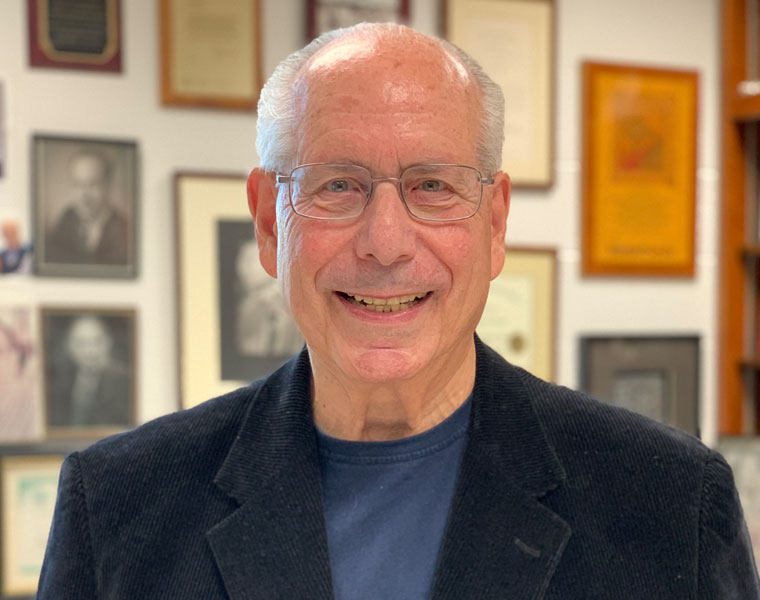Researchers Gary E. Wnek and the late Arnold Caplan recognized for groundbreaking innovations
Polymer scientist Gary E. Wnek and stem-cell biologist Arnold Caplan have been named Fellows of the National Academy of Inventors (NAI), the highest professional distinction awarded solely to inventors.
The two Case Western Reserve University faculty members will be inducted June 26 at the NAI’s 14th annual conference in Atlanta. Caplan, who was nominated in 2023, died in January. The NAI said his family will be invited to accept the medal in his honor.
The NAI Fellows Program was established “to highlight academic inventors who have demonstrated a prolific spirit of innovation in creating or facilitating outstanding inventions that have made a tangible impact on quality of life, economic development and the welfare of society.”
The 2024 cohort of Fellows exemplifies the NAI’s belief “that groundbreaking innovation knows no bounds and inventors can be found everywhere.”
Since 2012, the NAI Fellows program has grown to include 2,068 innovators who hold more than 68,000 U.S. patents and 20,000 licensed technologies. Their innovations have generated more than $3.2 trillion in revenue and 1.2 million jobs, according to the academy.
“Each of these individuals is tackling real-world issues and creating solutions that propel us into the future,” said NAI President Paul Sanberg. “Through their work, they are making significant contributions to science, creating lasting societal impact and growing the economy.”
Gary E. Wnek

Wnek, the Joseph F. Toot, Jr., Professor of Engineering and chair of macromolecular science and engineering at the Case School of Engineering, has been a faculty member at Case Western Reserve since 2004. He has authored or co-authored more than 215 publications and holds 38 U.S. patents.
He is a member of the National Science Foundation-funded Transformation of American Rubber through Domestic Innovation for Supply Security Engineering Research Center and has been nominated for undergraduate and graduate teaching awards at the university.
Wnek said the gap between technical needs and solutions to meet them is his spark for innovation, and he introduces this philosophy in several courses that he teaches. His research has spanned hydrogen fuel cells, medical applications and fire-resistant coatings for plastics.
“We all take for granted the properties of common plastics and elastomers, but I believe that maximum properties of such commodity materials have yet to be explored, and that there is room for creativity,” he said. “I see lots of opportunities on the horizon for new applications of designed layers of common rubbery polymers, for example, in soft robotics and impact damping.”
Arnold Caplan

Caplan was a professor of biology and founding director of the university’s Skeletal Research Center. He was the first to discover and describe mesenchymal stem cells (MSCs), which became the basis for the success of virtually all regenerative therapies.
Caplan, known as a gifted teacher and mentor, came to Case Western Reserve as an assistant professor of biology in 1969, becoming professor in 1981 and dedicating 54 years to the university. He held secondary appointments in both the School of Medicine and Case School of Engineering.
He isolated human MSCs from adult bone marrow, which led to the basis for regenerating human cartilage, bone and skin for the treatment of human diseases, including multiple sclerosis, osteoarthritis, spinal cord injuries and cancer. He founded Osiris Therapeutics Inc. to commercialize the technology in 1992, published more than 400 papers and held 20 patents.
For more information, contact Diana Steele, diana.steele@case.edu.

